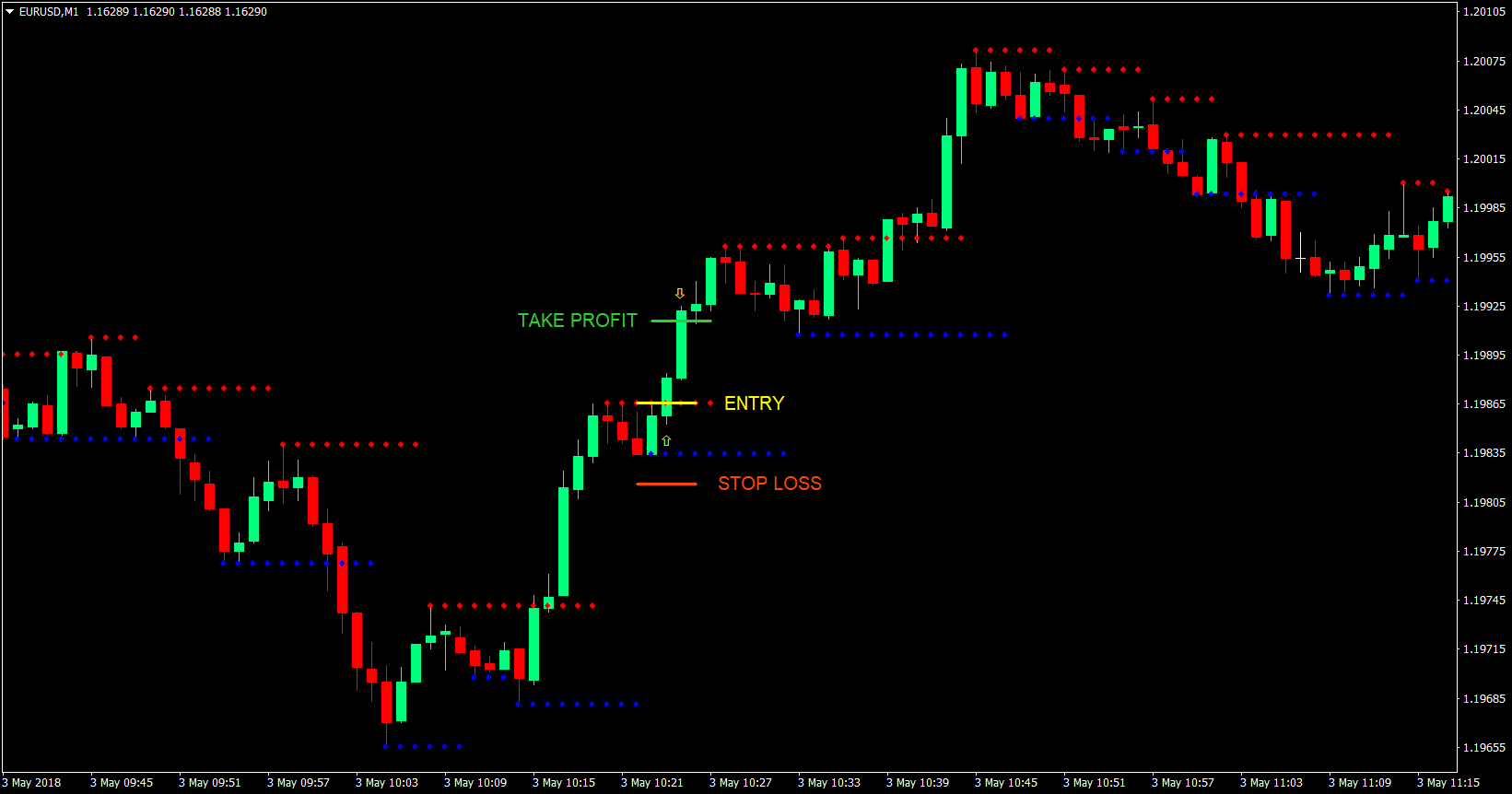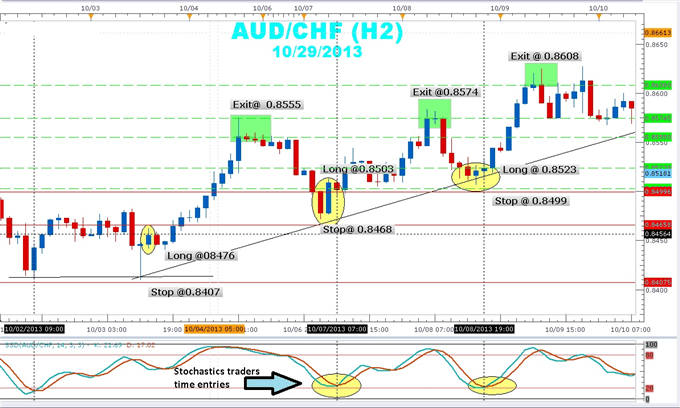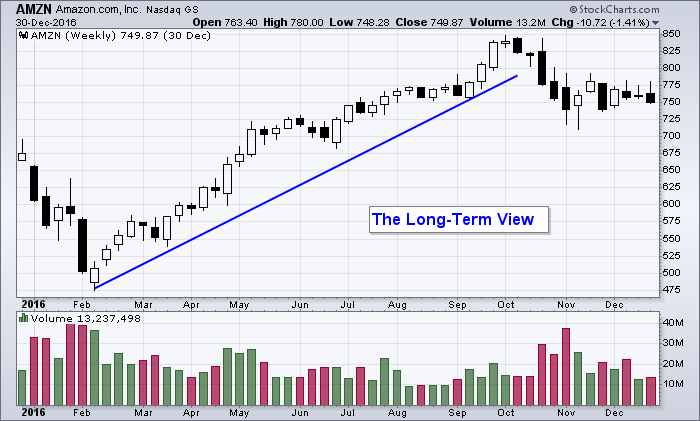To achieve success as a trader, it is essential to find a trading style that suits you, which starts with deciding from the 4 principal types of trader.
Choosing a trading style that suits you can be difficult especially when you are new to trading but it is absolutely essential to ensure long term success as a trader.
There are four principal different trading styles. Trading styles are typically distinguished by the length of time that you intend to hold your position open for and in some cases how frequently you trade. In this article we will look at the four principal trading styles: Scalping, Day Trading, Swing Trading and Position Trading, what they entail and who they are best suited to.
Scalping
Scalping is very rapid short-term trading strategy. The aim is to profit from minor price changes in a market. A scalper intends to make as many small profits as possible. Scalpers must have a strict exit strategy often using very tight stop losses.
This one minute price chart gives some examples of possible scalp entry and exit points

(source: forexmt4indicators.com)
This is the polar opposite to the “let your profits run” mindset. Without a disciplined approach one losing trade can quickly wipe out all the small profits that the trader has worked to achieve. A successful scalper’s account will show many winning trades versus losing trades, however losses will often be larger in size.
Scalping works on the idea that markets will complete at least a first stage of a movement but where it goes from there is uncertain. Thus the scalper just locks in profit from that initial movement.
Scalpers need to trade markets that are liquid, so that quick 'in an out' trades are possible at the lowest cost. Any delay in a trade could make the difference between a profit or a loss. By extension, scalpers must trade markets which have a tight spread. In other words, markets where the difference between the buy and the sell price is small. As scalpers aim to make many profits, but small profits and quickly, a large spread would make this style of trading very difficult.
The big disadvantage associated with scalping is that scalping manually is a full-time job. It is very time consuming and requires you to sit and watch the markets for a long period of time. Scalper traders face the risk from 'burnout' after too much screen time. So-called '1 click' trading is a popular tool to have in the trading platform among scalpers.
Day trading
Intraday trading is the act of opening and closing a trade within the same day. This could be just once in a day or it could involve trading multiple times over the course of one day. It is done in the hope of profiting on small fluctuations in the price of very liquid markets.
It is possible to day trade on any market, but it is most commonly seen on FX markets and stock indices. As with scalping, day traders look to trade liquid markets with tight spreads in order to keep costs low as possible.
This charts shows an example long entry trade on a the minute-minute timeframe.

(source: Dolphintrader.com)
To be a day trader you need to be the type of person who likes to finish a task on the same day. Day traders will not usually consider leaving a position open because they wouldn’t be able to sleep that night knowing that they have a running trade. Overnight trades in24-hour markets can be affected by price movements throughout the night, or gapping on the open, in the case of markets with fixed trading sessions like stocks.
Day trading can be a very effective strategy when there are big swings in the markets. However, it can be more challenging when the market is consolidating and there is less movement to capture. This can be a time-consuming trading style.
Swing trading
Swing trading is best suited to those who have the patience to wait for a trade setup, but once they have opened the position, they want it to profit and close it relatively quickly. Swing traders typically enter a trade in a period of volatility, after one trend has ended and just prior to a new trend beginning.
This 2-hour candle chart shows some potential day trades within the forex market

(Source: DailyFX.com)
A swing trader will almost always hold their position open overnight and possibly keep it open for a couple of sessions, to even a couple of weeks. This means that this style of trading is best suited to those that are happy to walk away from their computer once they have opened a position.
A swing trader will often place a wider stop loss than a day trader or scalper, this is because they want to give the position room to run rather than being closed out on immediate market noise.
Compared to scalping and day trading, swing trading is less time consuming. However, a swing trader must be able to wait patiently for the trade setup in the first place.
Position trading
Position trading is a longer-term trader that will take a 'position' in a market i.e. something to stay in for a while. It is the opposite end of the spectrum to a scalper. A position trader could keep a trade open for anything from a couple of weeks to a couple of months or even years.
The following weekly candlestick chart is an example of Amazon stock showing a clear upward trend over the course of a year

(Source: stockcharts.com)
A position trader is looking for large price movements that occur over an extended period of time. This type of trader does not trade actively. Instead they use long term charts in combination with other methods to determine the longer-term market direction, or the trend. Typically, they will enter a trade once the trend has established itself and then exit a position once a trend ends. These traders often base their trades on fundamental research.
Position traders will rarely try to forecast any price levels. Stop losses for position trades will be wide and often flexible. Traders will not want their position to be closed out on simply market noise but rather when the trend has broken or the long term story has changed.
This is the least time consuming of all the trading methods. However, it requires a lot of initial research and vast amounts of patience. If you know that you get excited after a trade has moved 10 points in your favour, then this might not be the trading style for you.
Summary of trading styles
|
|
Scalping |
Day Trading |
Swing Trading |
Position Trading |
|
Time Frame (chart) |
M1 – 1 minute M5 – 5 minute |
M5 -5 minute M15 – 15 minute M30 – 30 minute 1H - hourly 4H – 4 hourly |
1HR - hourly 4HR – 4 hourly 1D - daily 1W - weekly
|
1D - daily 1W - weekly MN -monthly |
|
Time trade open |
Seconds /minutes |
Minutes/ hours |
Hours/ days / maybe a few weeks |
Weeks / months / years |
|
Frequency |
High volume |
1 to several trades per day |
lower |
Low |
|
Stop loss |
tight |
tight |
wider |
wide |





